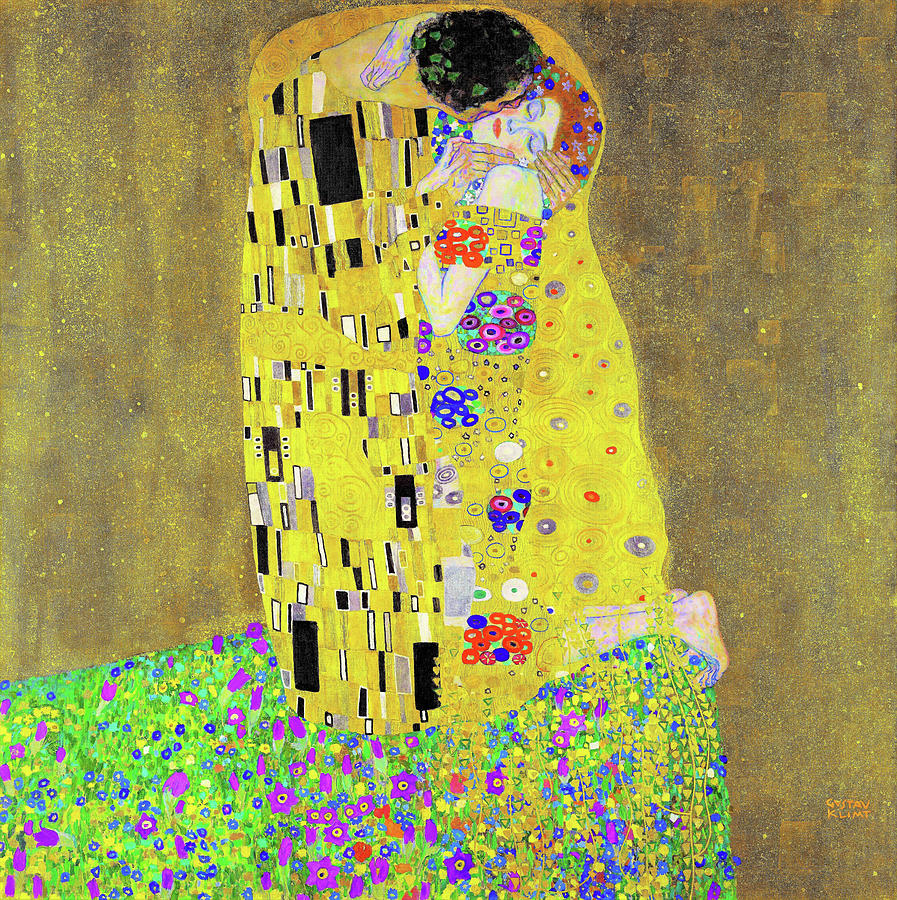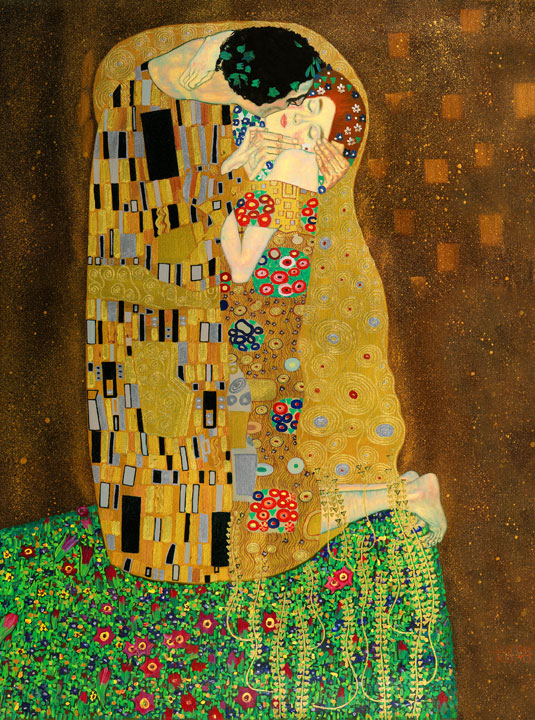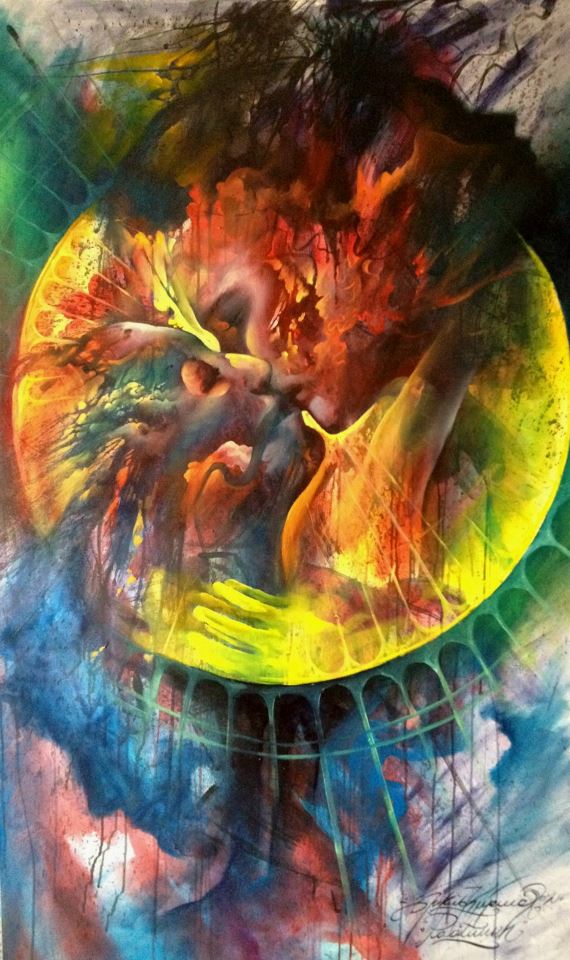


Indeed, with these paintings, Klimt reached the apex of his signature style-a fusion of the linear compositions of Art Nouveau, the organic forms of the Arts and Crafts movement, and his own interest in human passions.

As art historian Ludwig Hevesi has written, “Klimt’s ornamentation is the figurative expression of primal matter, which is always, without end, in a state of flux, turning and twisting in spirals, entangling itself, a whirlpool that takes on every shape, zebra stripes flashing like lightning, tongues of flame darting forwards, vine tendrils, smoothly linked chains, flowing veils, tender nets.” Both paintings combine gold and silver leaf with swirling patterning that alludes to vigorous life forces and corporeal curves. Not long after his return to Vienna, Klimt forged the greatest works of his Golden Phase, and arguably of his entire career: Portrait of Adele Bloch-Bauer I (1907) and The Kiss. (As the son of a goldsmith and engraver, working with the material came naturally to him.) While works like Judith and the Head of Holofernes (1901) and the Beethoven Frieze incorporated gold, he ramped up his use of the technique after a 1903 trip to Ravenna, Italy, where he encountered the excessive gold tooling and mosaic work of Byzantine art. In art historian Patrick Bade’s reading, the composition is blatantly sexual, equating salvation with physical passion and procreation: “The abstract, decorative surround of the couple suggests fairly explicitly the form of an erect phallus within the surrounding vagina,” he wrote in the 2011 book Gustav Klimt.īy this point in his career, Klimt had embarked on his “Golden Phase”-a period in which he decorated paintings with elaborate swaths of gold leaf, inscribing it with patterns that heightened pictures’ sheen and suggestiveness. A golden ovular form encircles them, emphasizing their union. Its final section, dubbed “The Yearning for Happiness finds fulfillment in Happiness,” shows a couple embracing so rapturously that they read as a single being. In this metaphorical painting, love is the elixir that triumphs over monstrous evils, releasing humanity from suffering. In Klimt’s renowned Beethoven Frieze (1902), installed in the Vienna Secession building, he was even more explicit, introducing motifs related to love and sex that would arise in The Kiss. Increasingly, Klimt’s paintings foregrounded themes like mortality, desire, and psychological inquiry. In 1897, Klimt banded together with a group of forward-thinking artists and designers to found the transgressive movement known as the Secession, a word borrowed from an ancient Roman term defined as a “revolt against ruling powers.” They chose a heroic motto to match: “To each age its art, and to art its freedom.” The Secession artists jettisoned the academic style of their predecessors in favor of work that dismantled the boundaries between art and life, and art and design. At the same time, intellectuals and artists like Klimt, Sigmund Freud, architect Otto Wagner, and composers Gustav Mahler and Arnold Schönberg pushed back with work that boldly expressed their impressions of the world around them. Old-guard arts institutions, inspired by Catholic righteousness and Victorian repression, sought to limit creative expression and sexual freedom. The painter had come of age in a moment of dramatic cultural transition in Austria.


 0 kommentar(er)
0 kommentar(er)
